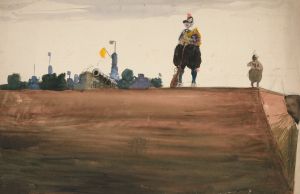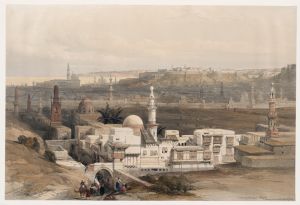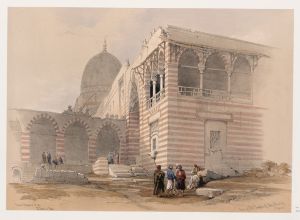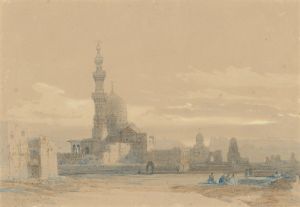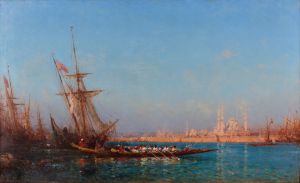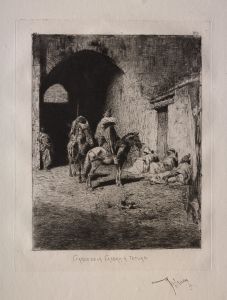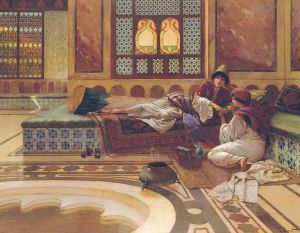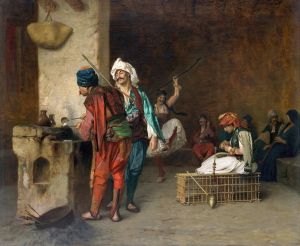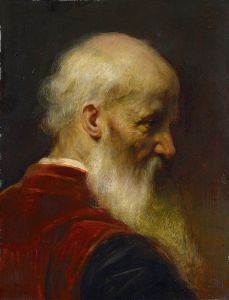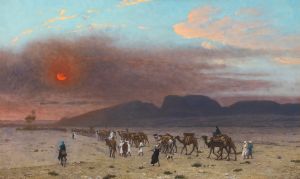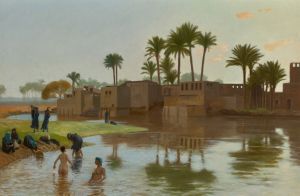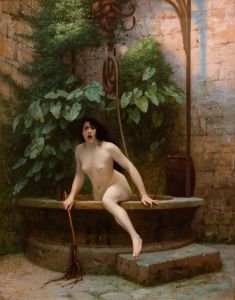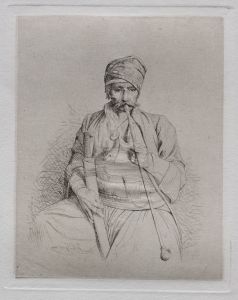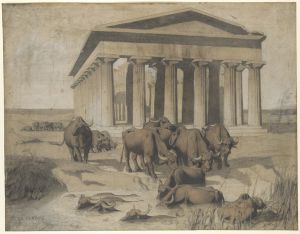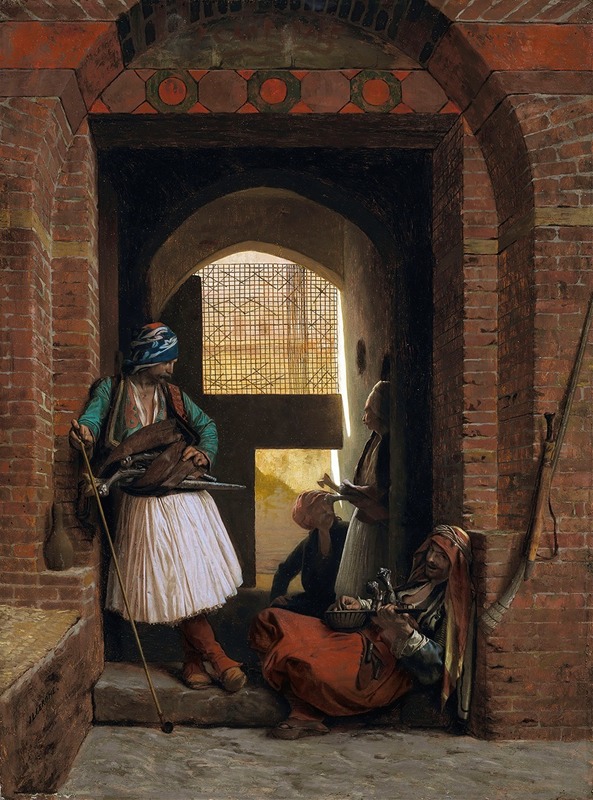
Corps de garde d’arnautes au Caire
A hand-painted replica of Jean-Léon Gérôme’s masterpiece Corps de garde d’arnautes au Caire, meticulously crafted by professional artists to capture the true essence of the original. Each piece is created with museum-quality canvas and rare mineral pigments, carefully painted by experienced artists with delicate brushstrokes and rich, layered colors to perfectly recreate the texture of the original artwork. Unlike machine-printed reproductions, this hand-painted version brings the painting to life, infused with the artist’s emotions and skill in every stroke. Whether for personal collection or home decoration, it instantly elevates the artistic atmosphere of any space.
"Corps de garde d’arnautes au Caire" is a painting by the renowned French artist Jean-Léon Gérôme, created in 1861. Gérôme was a prominent figure in the 19th-century academic art movement, known for his meticulous attention to detail and his fascination with historical and exotic subjects. This particular work exemplifies his interest in Orientalism, a genre that depicted the cultures and peoples of the Middle East and North Africa through a European lens.
The painting portrays a group of Arnauts, who were Albanian mercenaries serving in the Ottoman Empire, stationed in Cairo, Egypt. The term "corps de garde" refers to a guardroom or a place where soldiers are stationed. In this scene, Gérôme captures the Arnauts in a moment of rest and camaraderie, providing a glimpse into their daily lives.
The composition is carefully arranged to highlight the distinct attire and weaponry of the Arnauts, emphasizing their exoticism and the romanticized view of the East that was prevalent in European art at the time. The soldiers are depicted in traditional Albanian dress, which includes richly colored and intricately patterned garments, along with distinctive headgear. Their weapons, which include swords and rifles, are also prominently displayed, underscoring their role as fierce and skilled warriors.
Gérôme's use of light and shadow in "Corps de garde d’arnautes au Caire" is masterful, creating a sense of depth and realism that draws the viewer into the scene. The artist's attention to detail is evident in the textures of the fabrics, the intricate patterns of the clothing, and the realistic portrayal of the soldiers' expressions and postures. This level of detail reflects Gérôme's dedication to historical accuracy and his desire to provide an authentic representation of his subjects.
The setting of the painting is equally important, as it situates the Arnauts within the architectural and cultural context of Cairo. The background features elements of Islamic architecture, such as arched doorways and intricate tile work, which further enhance the exotic atmosphere of the scene. Gérôme's ability to capture the essence of the location adds to the overall impact of the painting, making it a vivid and immersive portrayal of a specific moment in time.
"Corps de garde d’arnautes au Caire" is a significant work within Gérôme's oeuvre, as it exemplifies his skill in combining historical and cultural elements to create a compelling narrative. The painting also reflects the broader trends of Orientalism in 19th-century European art, where artists sought to depict the "exotic" East in a way that was both romanticized and detailed.
Today, Jean-Léon Gérôme's works, including "Corps de garde d’arnautes au Caire," are celebrated for their technical excellence and their ability to transport viewers to different times and places. The painting remains an important example of Orientalist art and continues to be studied and appreciated for its artistic and historical significance.





